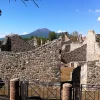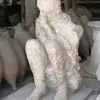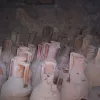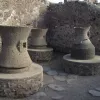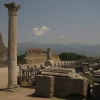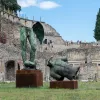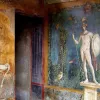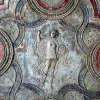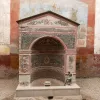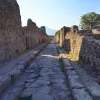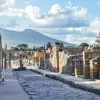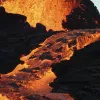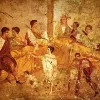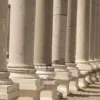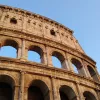TheSchoolRun.com closure date
As we informed you a few months ago, TheSchoolRun has had to make the difficult decision to close due to financial pressures and the company has now ceased trading. We had hoped to keep our content available through a partnership with another educational provider, but this provider has since withdrawn from the agreement.
As a result, we now have to permanently close TheSchoolRun.com. However, to give subscribers time to download any content they’d like to keep, we will keep the website open until 31st July 2025. After this date, the site will be taken down and there will be no further access to any resources. We strongly encourage you to download and save any resources you think you may want to use in the future.
In particular, we suggest downloading:
- Learning packs
- All the worksheets from the 11+ programme, if you are following this with your child
- Complete Learning Journey programmes (the packs below include all 40 worksheets for each programme)
You should already have received 16 primary school eBooks (worth £108.84) to download and keep. If you haven’t received these, please contact us at [email protected] before 31st July 2025, and we will send them to you.
We are very sorry that there is no way to continue offering access to resources and sincerely apologise for the inconvenience caused.
Pompeii
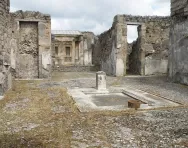
Why is Pompeii so famous?
Pompeii was a Roman town in southern Italy. On 24 August 79AD was buried under volcanic ash and rock following the eruption of the volcano, Mount Vesuvius. Most of the people who lived there were killed.
The town was excavated 1,600 years later and the remains of many items, buildings and people were found in a ‘petrified’ state (as they were at the time of the eruption).
Today Pompeii is a tourist destination where you can walk through the streets of what was once the first-century Roman city of Pompeii.
Top 10 facts
- The 79AD eruption of Mount Vesuvius was the first time the volcano had erupted for 1,800 years. The people of Pompeii didn’t know what a volcano was.
- The initial ‘mushroom’ cloud that shot out from the volcano as a column reached over 20 miles into the air.
- It has been estimated that the pyroclastic flow (molten and ash) from Vesuvius may have moved down the mountain as fast as 450 miles per hour.
- The pyroclastic flow was estimated to be as hot as 1,830°F or 999°C.
- Mount Vesuvius is thought to be one of the most dangerous volcanoes in the world and is the only active volcano on the mainland of Europe.
- The 79AD eruption lasted more than 24 hours.
- The eruption happened the day after the religious festival of Vulcan, who was the Roman god of fire.
- Pompeii was rediscovered in 1748 when builders were constructing a palace for King Charles III.
- Pompeii is a UNESCO Heritage Site, which means it is protected and preserved.
- Mount Vesuvius erupted most recently in 1944, but it wasn’t as powerful as in 79AD. It has a history of having a catastrophic eruption every 2,000 years or so... and it is almost 2,000 years since 79AD...
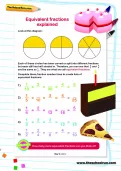

Boost Your Child's Maths & English Skills!
- Start your child on a tailored learning plan
- Weekly resources added to your plan
- Keep your child's learning on track and boost confidence
Did you know?
- We know so much about the destruction of Pompeii thanks to letters written by a man called Pliny the Younger, who witnessed the eruption. He also spoke to survivors and asked them about their experiences.
- Pompeii wasn’t the only settlement destroyed by Mount Vesuvius’s eruption in 79AD. Herculanium and Torre Annunziata were also destroyed.
- It is thought that of 20,000 inhabitants of Pompeii and 5,000 inhabitants of nearby Herculanium, around 16,000 people died in the destruction of Pompeii. These people didn’t evacuate immediately after the volcano erupted and then became caught by the toxic clouds of volcanic ash and dust and the pyroclastic flow.
- No-one tried to re-build Pompeii after the eruption, as was usual after a natural disaster, because the city had been buried in over 14 feet of ash and the damage was too great.
- The ash that buried the city and its people preserved everything where it was at the time of the disaster. This helps historians to understand a bit more about Roman life as it is a bit like having a snap-shot of the city in 79AD. Archaeologists found cavities or holes around the skeletons of some of the people they found in Pompeii. These holes where were the bodies of these people had once been and by pouring plaster into them, casts of the people have been formed. These casts can be found dotted around Pompeii, showing where these people were when they were hit by the pyroclastic flow.
- The type of eruption from Mount Vesuvius is now known as a Plinian eruption (after Pliny the younger’s description of it). This means that a tall column of extremely hot gases, ash and magma shoots strait up into the sky. A Plinian eruption doesn’t commonly include a lava flow, but is a pyroclastic flow which contains hot steam, rock, ash and dust.
Pompeii gallery:
- Vesuvius in the background
- A cast of a man caught in the eruption
- Urns
- Vessels found in the ruins
- Columns that remain from destroyed buildings
- A destroyed statue from Pompeii
- Frescos (paintings) inside Pompeii's buildings
- A street in Pompeii
Gallery
About
It is thought that people first started to live in Pompeii in the 7th century BC, about 2,700 years ago. Pompeii is found close to the coast where ships could come ashore – a part of modern Italy called the Bay of Naples. The soil was also very fertile which means it was good for growing crops (especially grapes and olives) – this was because volcanic soils are very rich in nutrients. The city didn’t officially become a Roman settlement until 80 BC and at the time was called the Colonia Veneria Cornelia Pompeii.
Pompeii was a very popular tourist destination during Roman times and many wealthy people had homes there or went there to visit. It was especially popular because it was a coastal area. It is thought that there were approximately 10,000-20,000 people living in the city. As well as houses, Pompeii had a Roman forum, temples, an aqueduct carrying water for people and a large amphitheatre.
The people of Pompeii didn’t know that Mount Vesuvius was a volcano and in fact there wasn’t even a word for volcano in Latin (the language spoken by Romans) as they were not aware of their existence until Vesuvius erupted. Pompeii did experience earthquakes, which scientists today would recognise as a warning that Vesuvius was going to erupt fairly soon, and in 62AD there was a huge earthquake in Pompeii from which the city was still being rebuilt at the time of Mount Vesuvius’s eruption.
Mount Vesuvius erupted on 24 August 79AD and it is thought that about 1.5 million tonnes of rock and ash per second created a huge pillar-looking cloud that was over 20 miles up into the sky. The people of Pompeii didn’t know what was happening and didn’t immediately evacuate the city. The cloud began to block out the sun and rock and ash rained down on the city from the volcanic cloud. The people of Pompeii probably thought that if they went outside to leave the city they might get hit by falling rocks (some people tied pillows to their heads to protect themselves), so as a result many stayed put with the aim of sitting it out.
Once the debris had stopped falling people went out into the streets and found the city covered in ash, rock and dust. However, what they didn’t realise was that the volcanic ‘mushroom’ cloud was about to collapse in on itself, which would send out what is called a pyroclastic flow. This is a deadly flow of extremely hot gas, rock and ash that moves around 400 miles an hour, destroying everything in its way. Sadly there is no escape from a pyroclastic flow as it travels too fast and is too hot to survive. As a result the people of Pompeii were killed instantly as it arrived in the city and covered them. It is thought that 16,000 people died as a result of the eruption.
We know all the details of the events of the eruption because it was witnessed by a man called Pliny the Younger who also spoke to other witnesses before writing down what had happened in two letters to Tacitus, an important Roman historian.
After the disaster Pompeii wasn’t rebuilt. The city had been buried in over 14 feet of ash and debris and so was left and eventually forgotten for over 1,600 years.
The city was rediscovered in 1748 by builders building a palace for King Charles III. Archaeologists uncovered the city to discover that it had been completed preserved by the ash and that many buildings and artefacts were still in one piece. Holes were also discovered surrounding many of the skeletons found. These holes were where the bodies of these people had lain; by pouring plaster into them the final position of people who had lain there for over 1,600 years could be recreated.
Today the city of Pompeii is a tourist site, but is also protected and preserved as a UNESCO Heritage Site. A lot of what we know about Roman life comes from the discovery of Pompeii.
Mount Vesuvius is still an active volcano today and will erupt again at some point, although scientists have ways of predicting when this might be. There was an eruption in 1944, but not as huge as the one in 79AD. The surrounding area is still inhabited and Naples is a thriving port city, but were Vesuvius to erupt again all of the people would need to be evacuated very quickly.
Related Videos
Just for fun...
- Play Pompeii Trader to understand what life was like in a busy Roman port and what goods were imported and exported from all across the Roman Empire
- After looking at pictures of the mosaics in Pompeii, including the mosaic of a guard dog, create your own Roman mosaic online
- Take a quiz on Pompeii and test your knowledge
- Plan your own investigation into the events of 79 AD
Children's books about Pompeii
Find out more about Pompeii
- The UNESCO guide to the archaeological areas of Pompei, Herculaneum and Torre Annunziata
- A kids' guide to the events in Pompeii
- Watch this reconstruction of the eruption of Mount Vesuvius
- Take a look at some of the objects recovered from Pompeii and see images of the city's art and architecture
- Watch video clips from the BBC programme, Pompeii: The Mystery of the People Frozen in Time
- Understand more about typical homes in Pompeii
- The disaster at Pompeii was completely unexpected, but could we now prevent it?
- More information about work and play in Pompeii
- Find out more about the discovery and excavation of Pompeii
- Six new homes have recently been restored and opened to the public in Pompeii; see pictures from the public opening in December 2015
- Join historian Greg Jenner for a kids' HomeSchool Histories lesson on life in Roman Pompeii
- Look through images of some of the beautiful objects found at Pompeii
- Find out why, even today, Vesuvius is the most dangerous volcano in the world
See for yourself
- Experience some 360-degree interactive panoramas of Pompeii and the city of Herculaneum
- If you ever visit Italy, you could visit the city of Pompeii in person and climb up Mount Vesuvius
